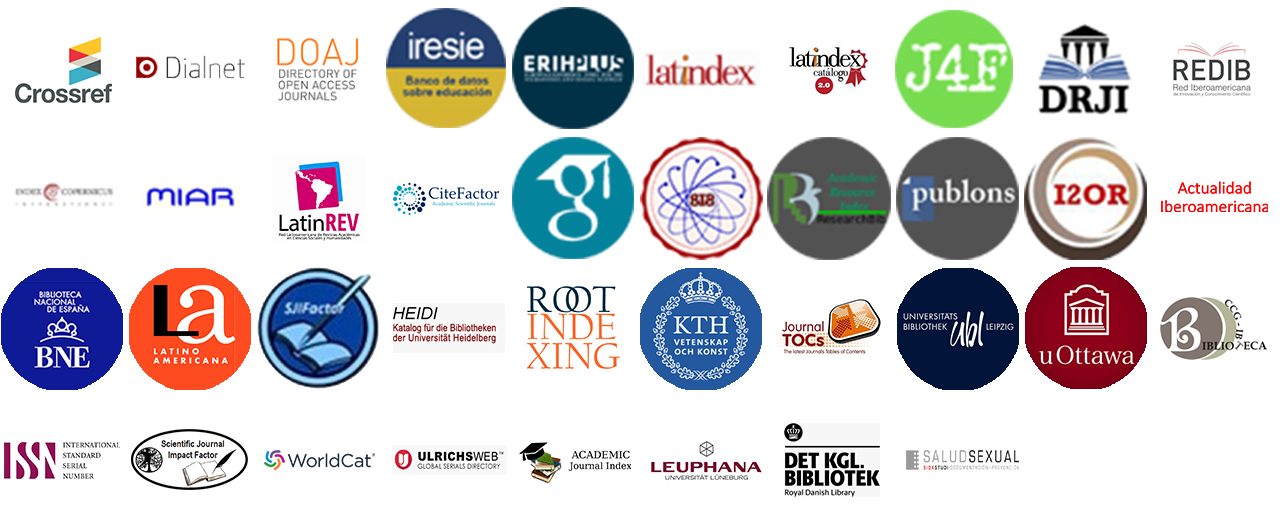MAPAVERDE, educational tool for mobile devices on the Green Map methodology
DOI:
https://doi.org/10.36825/RITI.08.15.007Keywords:
Computer Application, Mobile Devices, Green Map, Environment, MethodologyAbstract
Caring for and protecting the environment has become a pending issue for human beings. For years it has been projecting onto the planet the good and bad consequences of our development, and part of that development is reflected in new technologies, among which is the mobile phone. In the municipality of Consolación del Sur and from the Municipal University Center, work is being done on the project "Implementation of the Green Map Methodology in the management of environmental education in communities of Consolación del Sur" for the formation of an environmental culture for sustainable development creating awareness of the care and protection of the environment. The present work is given to solve the following problem: how to contribute in the construction of a computer application for the implementation of the Green Map methodology in the environmental management in the communities of Consolación del Sur for the development of the green maps of the communities of the Consolación del Sur municipality? The objective of this is to: Develop a computer application for mobile devices based on the Green Map methodology to educate future generations by raising awareness of the care and conservation of the environment. The methodologies, tools and technologies of software development to be used during the implementation to carry out the development of the application were studied. Finally, a system was obtained that responds to the stated objectives, allowing interaction with the user from any mobile device with the Android operating system.
References
Aanensen, D., Huntley, D., Feil, E., Al-Own F., Spratt, B. (2009). EpiCollect: linking smartphones to web applications for epidemiology, ecology and community data collection. PLoS One, 4 (9). doi: https://doi.org/10.1371/journal.pone.0006968
Arroyo-Vázquez, N. (2011). Informe APEI sobre movilidad. Gijón: Asociación Profesional de Especialistas en Información.
Cebrián, M. (2009). Nuevas formas de comunicación: cibermedios y medios móviles. Comunicar, 17 (33), 10-13.
Hui, C. Y., Walton, R., McKinstry, B., Jackson, T., Parker, R., Pinnock, H. (2017). The use of mobile applications to support self-management for people with asthma: a systematic review of controlled studies to identify features associated with clinical effectiveness and adherence. Journal of the American Medical Informatics Association, 24 (3), 619-632.
Cruz-Barragán, A., Barragán-López, A. D. (2014). Aplicaciones Móviles para el Proceso de Enseñanza-Aprendizaje en Enfermería. Salud y Administrción, 1 (3), 51-57. Recuperado de: https://revista.unsis.edu.mx/index.php/saludyadmon/article/view/81
Alegre, S. I. (2007). Talleres Comunitarios de Educación Ambiental para la introducción del Pensamiento Ambiental a nivel local. DELOS: Desarrollo Local Sostenible, 1 (0), 1-13. Recuperado de: https://dialnet.unirioja.es/servlet/articulo?codigo=2661124
Blanco, A. (2011). Programa de Animación sociocultural, que permita potenciar la participación comunitaria de los habitantes de la circunscripción No. 158 del Consejo popular “10 de octubre” en la gestión de los problemas ambientales de su localidad (Tesis de Máster). Pinar del Río, Cuba.
Bidart Cisneros, L., Ventosa Zenea, M. L., Rodríguez Velázquez, D., Capote Fernández, A., Blanco Vale, G., Castillo Garrido, V. (2017). MAPA VERDE en el contexto cubano. La Habana: Publicaciones Acuario Centro Félix Varela La Habana.
Leoncio-Antole, M., Hernández-Heredia, R., del Toro-Bergondo, L. (2016). El Mapa Verde como una vía para el desarrollo de la educación ambiental. EduSol, 16 (57). Recuperado de: https://www.redalyc.org/jatsRepo/4757/475753137018/html/index.html
Leyva Fontes, C. J., Alonso Gatell, A., Marichal González, A. M. (2016). El mapa verde. Alternativa para la educación y el mejoramiento ambiental a escala local. Arquitectura y Urbanismo, XXXVII (3), 149-162.
Gómez, J. S., Hernández, D. F. (2016). Desarrollo de Aplicaciones para Dispositivos Móviles. Recuperado de: https://www.slideshare.net/pipehernandez1020/mobile-d-programacion-dispositivos-moviles
Ramírez Vique, R. (2016). Métodos para el desarrollo de aplicaciones móviles. Barcelona: UOC. Recuperado de: https://www.exabyteinformatica.com/uoc/Informatica/Tecnologia_y_desarrollo_en_dispositivos_moviles/Tecnologia_y_desarrollo_en_dispositivos_moviles_(Modulo_4).pdf
Crespo Garcia, A. F. (2017). Programa de Ingeniería de Requisitos. Cartagena: Universidad de Cartagena. Recuperado de: https://www.academia.edu/32326842/INGENIER%C3%8DA_DE_REQUISITOS
Pérez García, M. V., Irrazábal, E., Carrasco-Velar, R., Coa Bergolla, Y. (2016). Importancia de los requisitos no funcionales: Estudio preliminar en una Universidad de Cuba. Trabajo presentado en el VII Taller Internacional de Calidad en las Tecnologías de la Información y las Comunicaciones, La Habana, Cuba.
Molina Hernández, Y., Granda Dihigo, A., Velázquez Cintra, A. (2019). Los requisitos no funcionales de software. Una estrategia para su desarrollo en el Centro de Informática Médica. Revista Cubana de Ciencias Informáticas, 13 (2), 77-90.
Cysneiros, L. M., Yu, E. (2004). Non-functional requirements elicitation. En J. C. S. do Prado Leite y J. H. Doorn (Eds.), Perspectives on Software Requirements. Boston, MA.: Springer.
Fuentes Rodríguez, J. M., Pierra Fuentes, A., Fírvida Donestevez, A., Pérez Baranda, H., López Zubieta, A., Sierra Corredera, L. D. (2016). Android para escritorio. Revista Cubana de Ciencias Informáticas, 10, 82-93.
Muñoz Serafín, M. (2018). Introducción al desarrollo de aplicaciones N-Capas con tecnologías Microsoft Manual de estudiante. Recuperado de: https://ticapacitacion.com/curso/ncapas
Published
How to Cite
Issue
Section
License
Copyright (c) 2020 Revista de Investigación en Tecnologías de la Información

This work is licensed under a Creative Commons Attribution-NonCommercial-NoDerivatives 4.0 International License.
Esta revista proporciona un acceso abierto a su contenido, basado en el principio de que ofrecer al público un acceso libre a las investigaciones ayuda a un mayor intercambio global del conocimiento.
El texto publicado en la Revista de Investigación en Tecnologías de la Información (RITI) se distribuye bajo la licencia Creative Commons (CC BY-NC
 ), que permite a terceros utilizar lo publicado citando a los autores del trabajo y a RITI, pero sin hacer uso del material con propósitos comerciales.
), que permite a terceros utilizar lo publicado citando a los autores del trabajo y a RITI, pero sin hacer uso del material con propósitos comerciales.



